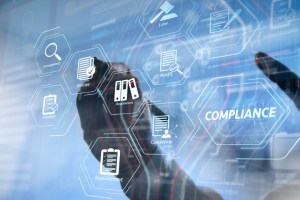With one-in-five public servants working from home, it’s crucial that agencies make sure they are using a secure, robust, and financially responsible IT solution writes Sojung Lee.
When it comes to a wide IT footprint, they don’t come any wider than Australian governments. Our immense size, but relatively small population, means they need to maintain presences across vast distances with minimal investment. Take everyone’s favourite, the ATO. As well as in major cities, the tax office maintains locations in places like Burnie, Tasmania and Traralgon, Victoria – both with populations under 30,000.
But it’s not just taxes that use these solutions. Healthcare, Centrelink, child support and other essential agencies rely on technology to improve accessibility no matter where it’s needed. While this is great for service, it does create IT complications. So, what is at stake and what can government agencies do about it?
Increased security risks on your data
Covid-19 was transformational for the Australian workplace, with 37 per cent of Australians working now from home at least some of the time, compared to just 13 per cent before March 2020. These rates are even higher in the public service, with one in five employees at some federal government agencies reportedly working remotely full-time. With many of these agencies dealing with highly sensitive data, it’s crucial that employers make sure they are using a secure, robust, and financially responsible IT solution. This means that even the most remote device needs to up-to-date security protection
In addition, there is considerable scrutiny on government spending. So it’s vital that the public service remains accountable for its budget and uses the most efficient means to operate. Digital solutions and AI-powered tools that better track processes and automate tasks in all locations can be an excellent cost-cutting measure.
Then there’s the recent uptick in international threats, online scams and data breach attacks. The 2023-2024 Annual Cyber Threat Report revealed that the Australian Signals Directorate received over 36,000 calls to its Australian Cyber Security Hotline, an increase of 12 per cent on the previous financial year. Recent high-profile attacks on companies like Telstra, Qantas and Ticketek exposed the personal and financial details of customers to the dark web. Databases such as the ATO, Centrelink and Medicare are especially vulnerable, with identity fraud on any government service incredibly difficult to resolve. So it’s key that our primary services ensure that their IT departments are using only the most secure systems.
As if managing all these challenges isn’t enough, there’s also the opportunities. The Australian Government have declared their commitment to promoting safe and responsible AI. Agencies are already starting to take advantage of automated tools such as ChatGPT and Co-Pilot. And recently announced guardrails will focus on ensuring that AI systems being developed and used by organisations are tested, transparent and supported by clear accountability if things go wrong.
A lot of the adaption of AI will be driven by users. In fact, according to PWC, 22 per cent of Australian workers think it could help them be more productive, and 17 per cent say it could help them learn valuable new skills. IT departments need to plan how they will manage and support this enthusiasm.
Technology to bridge the divide
Remote access is no longer simply viewing and controlling a desktop from afar – there is now a range of solutions which can be used for IT support and ensure secure access for remote workers.
Process automation is a game-changer in any workplace. On average, it takes five to ten minutes to document a remote support case. But in a time-crunch, admin is the first thing to be skipped – making it more difficult to retroactively examine a case and potentially making the job harder. AI can now analyse and document the details of a task to support workers and save them time better spent on other tasks.
Regulatory requirements can be complex and change quickly, with manual management of these systems taking time away from more strategic work. This is where a remote monitoring and control systems can be especially useful for monitoring data, generating reports, and detecting issues and gaps. Which, in turn, helps to improve accuracy and efficiency.
Augmented Reality, not just a fad for gamers, is having real-world success in managing smart infrastructure, asset management and maintenance. Using AR to overlay data and analysis over work can provide a much faster way to verify, monitor or fix problems remotely, making work safer and more efficient. This in turn supports collaboration between teams, no matter the distance, which is essential for remote workers and project managers alike. Processes that previously might require travel or expensive shipping can now be done with specialised technology in a fraction of the time and budget.
Government agencies are ideally placed to benefit from empowering their workforce remotely and expanding accessibility to communities from the top of Queensland to the southern-most towns in Tasmania. These solutions can help ensure that public service employees receive the support they need, while remaining compliant and combatting security risks to protect their most important customer – you.
Sojung Lee, President at TeamViewer Asia Pacific




Leave a Reply